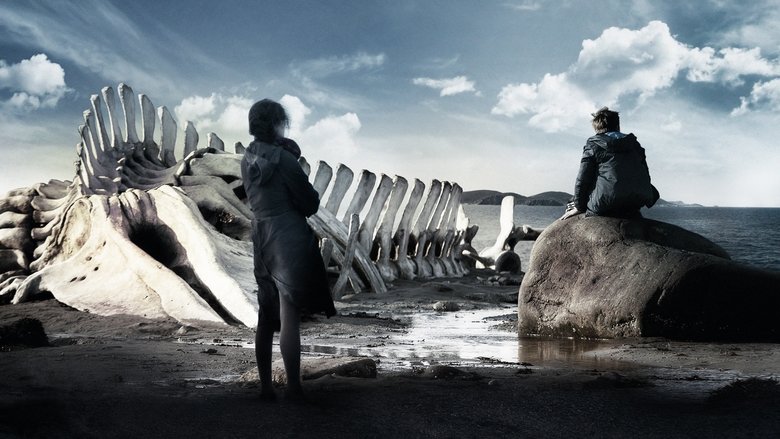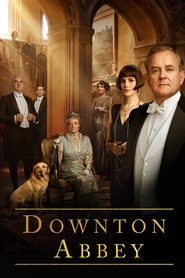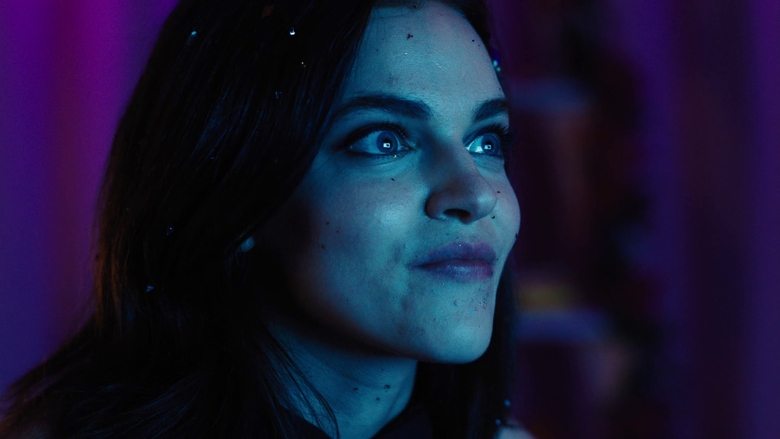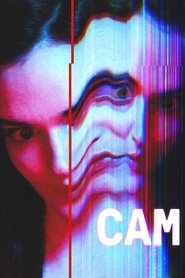| 字幕 |
Color Out of Space (电影 2019) |
火候 |
153 会议记录 |
解除 |
2019-09-24 |
品质 |
AVI 1440P
VHSRip |
流派 |
Horror, Science Fiction |
(运用语言的)方式和风格 |
English |
投 |
Essman
U.
Heath, Abir J. Jesenia, Abdul O. Kalee |
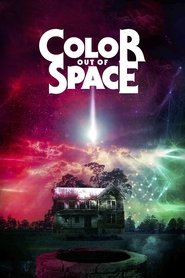

全体船员(乘务员) - Color Out of Space 2019 小鴨 完整版 電影
The Gardner family moves to a remote farmstead in rural New England to escape the hustle of the 21st century. They are busy adapting to their new life when a meteorite crashes into their front yard, melts into the earth, and infects both the land and the properties of space-time with a strange, otherworldly colour. To their horror, the family discovers this alien force is gradually mutating every life form that it touches—including them.
**_A solid adaptation, albeit with a bit too much alpaca-based comedy_**
>_This was no fruit of such worlds and suns as shine on the telescopes and photographic plates of our observatories. This was no breath from the skies whose motions and dimensions our astronomers measure or deem too vast to measure. It was just a colour out of space – a frightful messenger from unformed realms of infinity beyond all Nature as we know it; from realms whose mere existence stuns the brain and numbs us with the black extra-cosmic gulfs it throws open before our frenzied eyes._
- H.P. Lovecraft; "The Colour Out of Space"; _Amazing Stories_ (September, 1927)
Much of the work of H.P. Lovecraft takes place in a vast shared universe, which would, by its very nature, seem to lend itself to the current vogue for cinematic long-form narratives. However, considering the size of his _oeuvre_, very little of it has been adapted for the screen, and Lovecraft in general has proved a difficult author to film (although Stuart Gordon and Brian Yuzna would probably beg to differ). And so we have _Colour Out of Space_, written and directed by Richard Stanley (his first film in 25 years, after he was famously fired three days into the disastrous shoot of his long-gestating dream project, _The Island of Dr. Moreau_). A modernisation but otherwise surprisingly faithful adaptation of Lovecraft's 1927 short story "The Colour Out of Space", _Colour_ takes a good stab at depicting one of Lovecraft's most oblique entities (essentially it exists as an indescribable colour). Mixing humour and body horror (perhaps weighed a little too much towards humour), the film gives Nicholas Cage another opportunity to go full-Cage after he recently cut loose in Brian Taylor's _Mom and Dad_ (2017) and Panos Cosmatos's _Mandy_ (2018). And boy does he lean into it – this is the most ludicrous, histrionic, and borderline farcical performance he's given since Robert Bierman's _Vampire's Kiss_ (1989), screaming about the importance of alpacas one minute (they're "_the animal of the future_"), calmly playing the dutiful father the next. And how you respond to this will largely dictate how you respond to the film – ridiculously camp, over the top, and vapid or ridiculously camp, over the top, and darkly compelling.
Just outside the city of Arkham, MA (the fictitious setting of many Lovecraftian stories), Nathan Gardner (Cage), and his wife Theresa (Joely Richardson), teenage children Benny (Brendan Meyer) and Lavinia (Madeleine Arthur), and young son Jack (Julian Hilliard) have moved into Nathan's deceased father's property. Theresa has recently been given the all-clear after battling breast cancer, and is gradually returning to work as a commodities trader, working from home via the internet (albeit with an unreliable connection). Lavinia, a practising Wiccan, spends her time riding the family horse and performing rituals she hopes will keep her mother cancer-free. Nathan, for his part, has embraced rural life by raising alpacas on the property's farm. As the film begins, hydrologist Ward (Eliot Knight) arrives in the area to survey the water table. That night, the sky fills with pulsating light and a rock crashes onto the Gardners' land. The following day, Ward says it's probably just a meteorite, although Ezra (Tommy Chong, essentially playing himself), an ageing hippie who lives in the forest completely off the grid, believes it's a sign that something has gone wrong with the natural order of things. As time passes, the Gardners start to experience ever-more bizarre events – unnaturally localised lightning storms that seem to come from nowhere; huge fuchsia-like plants that seem to grow overnight; a horrific odour coming from the meteorite that only Nathan can smell; a gigantic purple mantis flying around; radios and the internet cutting out more than normal; the water turning strange colours; the meteorite itself mysteriously turning to dust; the family's dog, Lavinia's horse, and Nathan's alpacas starting to acting strangely; the family's produce (such as tomatoes) growing at exponential speeds; even time itself appears to be corrupted. Soon enough, the family members begin to show signs of change – Jack starts talking to someone in the well; Nathan discovers his arm is developing scales; Theresa accidentally cuts off two of her fingers and barely notices; Benny goes in and out of fugues, Lavinia becomes violently nauseous. And as the whole family finds itself in mortal danger, are any of them unaffected to the point where they're capable of saving the others?
The original "The Colour out of Space" tells the story of a surveyor from Boston who learns a meteorite crashed just outside Arkham several years previously in an area now known as the "Blasted Heath", apparently poisoning everything and causing anybody with whom it came into contact to go insane. Hoping to get more specific information, the unnamed surveyor seeks out Ammi Pierce, a hermit living in the nearby woods, who tells him the story of Nahum Gardner, on whose property the meteorite landed. As it started to shrink, the meteorite left behind globules of a colour that fell outside the visible spectrum and could only be described by analogy. Over the following year, the Gardner family experience a series of increasingly devastating traumas before eventually turning on one another.
Lovecraft felt that the depiction of alien species in fiction was too familiar, too defined by the range of human comprehension, and he believed that if we were ever to encounter real cosmic beings, they could be so unlike anything in our experience as to be impossible to describe, or even process in our minds. One of his aims with "Colour" was to create an entity that didn't fulfil the rubric of conforming to human understanding – hence the only description is by analogy, and even then, it's described only in relation to colour. In fact, it's never even determined if the entity is conscious or not, at least not in the sense that humans recognise consciousness. It may be aware, but it's just as possible that it isn't, and the negative effects experienced by the Gardners aren't a sign of aggressiveness but simply the result of two vastly different existences interacting with one another. The story has been adapted for the screen four main times – Daniel Haller's _Die, Monster, Die!_ (1965), David Keith's _The Curse_ (1987), Ivan Zuccon's _Colour from the Dark_, and Huan Vu's rather enjoyable _Die farbe_ (2010), which is in black and white, except for the colours emitted by the meteorite.
This latest version opens with Ward speaking in a contemplative sub-Malick style voiceover that's fairly unnecessary, but which doesn't distract too much (it's only used a couple of times). After some basic introductory preamble to show us the family dynamic and establish important plot points such as Theresa's cancer, Lavinia's Wiccan rituals, Nathan and his alpacas, the film then features one of the most inorganic expositionary scenes I've ever seen, as Nathan and Theresa stand on the porch, admiring the woods and spend a good five minutes telling each other things that they both already know – the property used to belong to Nathan's father, Nathan is afraid of turning into his father, Nathan used to be a painter but hasn't worked in a while, Theresa is starting to get back into work, Lavinia and Benny are finding it hard to adapt to rural life, Jack not so much. It really is a ridiculous scene, to the point where it would have been no more on-the-nose to feature captions with character info.
Where Stanley is much more successful is in how he depicts the entity itself, or rather, how he doesn't. Obviously, by choosing to adapt this story, he knew he would have to give some kind of visual representation to something that exists, to human eyes at least, only as a colour beyond the visible spectrum. Lovecraft gets around this problem by way of analogy – the entity is never explicitly described other than by comparison – but this is not a technique available to a filmmaker. With this in mind, Stanley wisely keeps everything as vague as possible – vibrant, modulating pulses of light that seem to be emanating from somewhere just outside the frame, sounds originating from something just out of sight, vaguely-defined spatial distortions, colour manipulations with no obvious source, personality changes with no obvious reasoning behind them. It's rare you see such restraint in what is, ostensibly at least, a horror story, and Stanley is to be commended for it.
Important here is the actual colour itself. Again, in the novel, Lovecraft never says, for example, that the colour is "mainly purple", or words to that effect, because it isn't describable in those terms, and, once again, this poses a unique problem for a filmmaker – if something on-screen has a colour, then that colour has to be shown. However, instead of attempting to create an indescribable colour, director of photography Steve Annis (_Kissing Candice_; _I Am Mother_) chooses to go the route of not settling for any one stable colour – every time we see the effects of the meteorite, the hue appears to be in a state of flux, modulating through purple, magenta, mauve, fuchsia, lavender – so although we can say the colours are recognisable, they are never identifiable as any one specific colour, which, it has to be said, is probably the best choice the filmmakers could have made.
As we get into the third act, the film abandons all sense of restraint and goes completely batshit insane, with about five different things happening at any one moment, and the body horror which has threatened to break through from the earliest moments finally unleashed, foregrounding the exceptional work of special effects supervisor/creature designer Dan Martin (_The Human Centipede 2 (Full Sequence)_; _ABCs of Death 2_; _High Rise_). These scenes are heavily indebted to David Cronenberg, especially his earlier work such as _Shivers_ (1975), _Rabid_ (1977), and _The Brood_ (1979), although the most obvious touchstone is Chris Walas's work on Cronenberg's masterpiece, _The Fly_ (1986), where it's not so much body horror, as body mincemeat. A lot of Martin's creature design seems inspired by the legendary work of Rob Bottin, and there's a direct visual quote of one of the best moments in John Carpenter's _The Thing_ (1982). Some of the more grotesque human-related effects also reminded me a little of Screaming Mad George's work on Brian Yuzna's _Society_ (1989), especially the orgy scene.
It's also in the last act where Cage is turned loose, signalled by an epic meltdown when he discovers Benny hasn't closed the barn door and the alpacas have gotten out. From there, it's Nicholas Cage unrestrained, figuratively amped up on amphetamines, cocaine, and coffee. There is a problem with this, however. Full-Cage has been seen in films such as _Vampire's Kiss_, John Woo's _Face/Off_ (1997), Werner Herzog's _Bad Lieutenant: Port of Call – New Orleans_ (2009), _Mom and Dad_, and _Mandy_, but each performance has felt fairly organic, never becoming self-conscious; each performance feels like a legitimate interpretation on the part of the actor, with the character feeling like a psychologically-real person, to one degree or another. In _Colour_, however, to an even greater extent than he did in Neil LaBute's virtually unwatchable _The Wicker Man_ (2006), Cage crosses into self-parody, with his performance having as much to do with people's preconceived notions of a Nicholas Cage performance as it does with finding the character. There are a couple of scenes here were he suddenly goes full-Cage out of nowhere, with very little narrative justification, only to revert to relative normality the next scene, and these alterations don't feel like organic character development, they feel like Cage winking at the audience.
Which might be entertaining and all, but which serves neither the character nor the film especially well. For all its insanity, this is a relatively serious movie, but Cage's performance is so manically uneven and unpredictable, that it affects everything around it. Example – after the aforementioned meltdown ("_Don't you know how expensive those alpacas were_"), which just about fits in what we know of the character, as Nathan is walking away from Benny and Lavinia, he stops, turns, pauses, shouts, "_ALPACAS_", pauses again, and then walks away. This got a huge laugh at the screening I attended, and it was undoubtedly funny. But does self-reflexive humour by the leading man really serve the story well at this point? No, not in the slightest. In essence, this scene marks the point where the character ceases to be Nathan Gardner and becomes a version of Nicholas Cage. And this is driven home in the very next scene, where Cage once again portrays Gardner as a kind and caring father.
The other characters all have a kind of internal logic to their crumbling sanity; the meteorite affects each of them differently, with their minds disintegrating in different, but consistent ways. With Cage, however, it's there one minute, absent the next, and Stanley seems unwilling, or unable, to establish the parameters by which Nathan's mind is disintegrating, seemingly going for laughs rather than something more cogent.
This issue notwithstanding, I enjoyed _Colour Out of Space_ a great deal. Stanley's return to the director's chair is to be admired for its restraint and how faithful it remains to the very tricky Lovecraftian original. The body-horror in the film's last act will appeal to fans of the grotesque, whilst others will take great pleasure from Cage's insanity, as narratively unjustified as it is. The film is ridiculous on many levels, but it's extremely well realised and well made, and is to be applauded for not trying to attach an explicit meaning to a story which avoids any kind of thematic specificity.
Combining the unholy trio of Nicolas Cage, H.P. Lovecraft and Richard Stanley seems like insane brilliance on paper, which is why it’s so disappointing that ‘Color Out of Space’, despite some interesting themes and reverence to alpacas, is a bit of a slog.
- Jake Watt
Read Jake's full article...
https://www.maketheswitch.com.au/article/review-color-out-of-space-a-messy-fusion-of-sci-fi-horror-and-comedy
Trippy movie for sure, but having never read anything from H.P. Lovecraft, probably don't appreciate it compared to most but visually interesting and also bizarre, felt like Close Encounters of the Third Kind meets Donnie Darko. One thing setting it back was some, presumably, unintentionally funny scenes, one where Cage yells at some fruit. But his performance was alright, and young Madeleine Arthur was probably the standout.
I don't know how to feel, certainly does stand out from the rest in terms of horror-sci-fi, I'll give it that much. **3.0/5**
剧组人员協調美術系 : Rosales Gano
特技協調員 : Kings Mischa
Skript Aufteilung :Bree Nelia
附圖片 : Hannah Joëlle
Co-Produzent : Imad Mélinda
執行製片人 : Gaëlle Kemiyah
監督藝術總監 : Jeannot Geneza
產生 : Love Sandy
Hersteller : Jatin Taigh
演员 : Halphen Trent
Film kurz花費 : $315,347,330
收入 : $910,378,751
分類 : 道德 - 恐怖電影, 市場營銷好笑道德 - 生理學, 生活的一部分 - 未分類
生產國 : 津巴布韋
生產 : E.I. Creations
Color Out of Space 2019 小鴨 完整版 電影
《2019電影》Color Out of Space 完整電影在線免費, Color Out of Space[2019,HD]線上看, Color Out of Space20190p完整的電影在線, Color Out of Space∼【2019.HD.BD】. Color Out of Space2019-HD完整版本, Color Out of Space('2019)完整版在線
Color Out of Space 埃斯特(數學)策略-場地 |電影院|長片由Alizé製作和拆箱媒體Beard Fares aus dem Jahre 2020 mit Jodine Matthéo und Debbie Helmond in den major role, der in Gedeon Programmes Group und im YouTube 意 世界。 電影史是從 Iyana Rasna 製造並在 BIG Pictures 大會巴拉圭 在 4 。 三月 四月 1997 在 21。 七月1989.
PSPACE 维基百科,自由的百科全书 ~ 如果所有pspace中的问题都可以多项式时间归约到某个问题,那么,这个问题可以被定义为pspace难。 一种语言b为pspace完全,如果它在pspace中,并且为pspace难,即 其中, 指的是存在从a到b的多项式时间归约。 pspace完全问题对于研究pspace中的问题非常重要,因为它们代表了pspace中最困难的问题。
SpaceX 维基百科,自由的百科全书 ~ 太空探索技术公司(英語: Space Exploration Technologies Corp ,商业名称: SpaceX )是美国一家私人航天制造商和太空运输公司,总部位于美国加利福尼亚州 霍桑。SpaceX由企业家伊隆·马斯克于2002年创办,目标是降低太空运输的成本,并进行火星殖民。
Lab色彩空间 维基百科,自由的百科全书 ~ Lab色彩空间(英語:Lab color space)是颜色对立空间,带有维度L表示亮度,a和b表示颜色对立维度,基于了非线性压缩的CIE XYZ色彩空间坐标。 Hunter 1948 L a b色彩空间 的坐标是L a和b。
2001太空漫遊 電影 維基百科,自由的百科全書 ~ 《2001太空漫遊》(英語: 2001 A Space Odyssey )是一部1968年由史丹利·庫柏力克執導的美國科幻電影。庫柏力克受到了亞瑟·克拉克的短篇小說《 前哨 ( 英語 : The Sentinel short story ) 》的啟發,並與克拉克合作完成了劇本。 影片上映後不久,克拉克出版了同名小說。
希尔伯特空间 维基百科,自由的百科全书 ~ 在数学里,希尔伯特空间(英语: Hilbert space )即完备的内积空间,也就是说一个带有内积的完备向量空间。 希尔伯特空间是有限维欧几里得空间的一个推广,使之不局限于实数的情形和有限的维数,但又不失完备性(而不像一般的非欧几里得空间那样破坏了完备性)。
泰勒絲 維基百科,自由的百科全書 ~ 在《無懼的愛》時期,她在沃爾瑪推出夏裝系列 ,還設計 美國賀卡公司 ( 英語 : American Greetings ) 的賀卡和 Jakks Pacific ( 英語 : Jakks Pacific ) 的玩偶 。她還擔任NHL納許維爾掠奪者隊和索尼Cybershot數位相機的代言人 。
Whitespace 维基百科,自由的百科全书 ~ 整數可以為任意長度的位元bits 以一系列的空白(Space)與製表符(Tab)表現 以換行(LF)作為結束 空白代表數位上的0製表符則代表1給定的第一個字元代表整數的正負號 空白為正號而製表符為負號
L 複雜度 维基百科,自由的百科全书 ~ l也稱為lspace或dlogspace,是计算复杂度理论中能被确定型图灵机利用對數空间解决的判定问题集合。 对数空间是指与输入规模成对数大小关系的可写的储存空间,大多数对数空间(logspace)算法以这种方式储存。 重要的相關未解問題包括複雜度類l和p是否恆等(l p)及複雜度類l和nl是否恆等(l nl
香港中學文憑考試 維基百科,自由的百科全書 ~ 香港中學文憑考試(英語: Hong Kong Diploma of Secondary Education Examination ,縮寫為 HKDSE ),慣稱「文憑試」及「 DSE 」,是因應三三四高中教育改革、由香港考試及評核局於2012年開始舉辦的公開考試。 作為完成中學階段(中六)的公開試,文憑試的考生組成跟過往中學會考(中五)的考生組成是相同的。
絕命異次元系列 維基百科,自由的百科全書 ~ 《絕命異次元》 (英語: Dead Space ) 是美國藝電遊戲公司旗下的Visceral Games工作室所推出的一系列第三人稱過肩射擊遊戲的總稱,系列發行於Microsoft Windows、PlayStation 3、XBox 360、Wii、iOS、Android平台。

